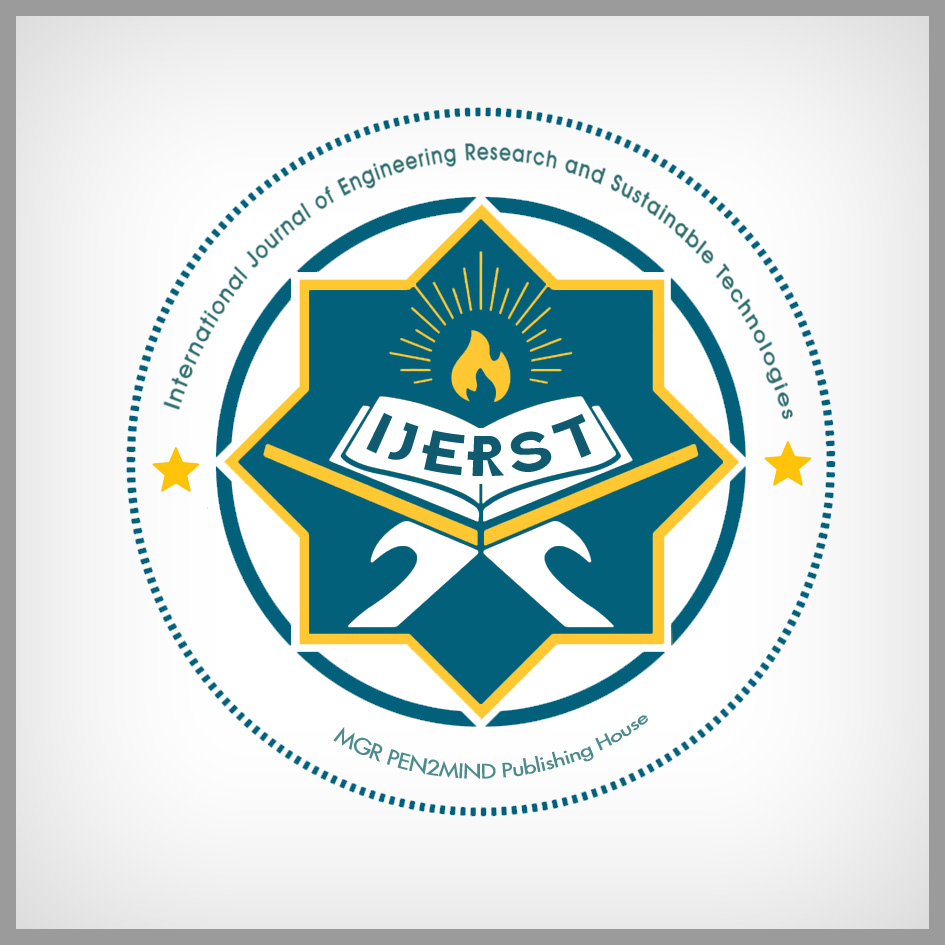FACE RECOGNITION USING CNN
DOI:
https://doi.org/10.63458/ijerst.v2i2.81Keywords:
Face recognition, Deep learning, CNN, VGG16Abstract
The use of face recognition is growing at an astounding rate these days. Currently, researchers are developing many methods
for how a facial recognition system functions. People often find themselves alone in their families in situations such as normal
disasters, kidnappings, accidents, missing persons cases, and many more situations. To reach the family of those refugees and
ensure their safety and support, it is imperative to identify their relatives. Every day, police departments enroll missing cases.
Some of these enlisted cases are resolved, but not all of them are resolved by employing the labor-intensive manual approach.
This study aims to address the time delay caused by current police examination procedures by leveraging the latest innovations.
Therefore, we implement a framework that makes use of the CNN (Convolutional Neural Network) technique and the VGG16
architecture. We begin with our input dataset, which consists of 84 photos taken from 21 different households. The final dataset,
obtained by applying the enhancement method, consists of 1512 photos, of which 80% are utilized for training and 20% are for
testing. This framework offers a quick and easy method for locating a refugee's personal and helps validate an individual's
identity by using their picture and family information with related models that are more accurate.
References
R. Dandekar and M. S. Nimbarte, "Verification of family relation from parents and child facial images," 2014 International Conference on Power, Automation and Communication (INPAC), Amravati, 2014, pp. 157-162, doi: 10.1109/INPAC.2014.6981146.
"Face recognition based on convolution neural network,"36th Chinese Control Conference (CCC), Dalian, 2017, pp. 4077-4081, doi: 10.23919/ChiCC.2017.8027997, 2017.
D. K. Thara, B. G. Premasudha, V. R. Ram and R. Suma, "Impact of big data in healthcare: A survey," 2016 2nd International Conference on Contemporary Computing and Informatics (IC3I), Noida, 2016, pp. 729-735, doi: 10.1109/IC3I.2016.7918057., 2016.
Q. Dai, P. Carr, L. Sigal and D. Hoiem, "Family Member Identification from Photo Collections," 2015 IEEE Winter Conference on Applications of Computer Vision, Waikoloa, HI, 2015, pp. 982-989, doi:10.1109/WACV.2015.136., 2015.
D. K. Thara, B. G. Premasudha, Ramesh Sunder Nayak, T. V. Murthy,G. Ananth Prabhu & Naeem Hanoon,”Electroencephalogram for epileptic seizure detection using stacked bidirectional LSTM_GAP neural network”,Evolutionary Intelligence,2020 Springer, https://doi.org/10.1007/s12065-020-00459-9.
Sajjanhar, Atul& Wu, ZhaoQi& Wen, Quan., “Deep Learning Models for Facial Expression Recognition”.
-6. 10.1109/DICTA.2018.8615843., 2018.
M. Coşkun, A. Uçar, Ö. Yildirim and Y. Demir, "Face recognition based on convolutional neural network," 2017 International Conference on Modern Electrical and Energy Systems (MEES), Kremenchuk, 2017, pp. 376-379, doi: 10.1109/MEES.2017.8248937. 2017.
Thara D.K., PremaSudha B.G., Fan Xiong,"Epileptic seizure detection and prediction using stacked bidirectional long short term memory",Pattern Recognition Letters,Volume 128, pp. 529- 535,ISSN 0167-8655,https://doi.org/10.1016/j.patrec.2019.10.034, 2019.
Deep face recognition using imperfect facial data Ali Elmahmudi, Hassan Ugail∗Centre for Visual Computing, Faculty of Engineering and Informatics, University of Bradford, Bradford BD7 1DP, UK.
Tolba, A.S., El-Baz, A.H. and El-Harby, A.A.,’Face Recognition: A Literature Review’. International Journal of Signal Processing,2005.
Bindushree S, Rakshitha AN, “Face Recognition using Deep learning’IJASI,Vol 01, 2020.www.ijasi.org
Dr. Abhinandan N, Karthika Ravi. "A comprehensive study on the role of forensic accounting in detecting financial frauds with reference to karnataka" , mLAC Journal for Arts, Commerce and Sciences (m-JACS) ISSN: 2584- 1920, 2024.
Utkarsh Kushwaha, Puja Gupta, Sonu Airen, Megha Kuliha. "Analysis of CNN Model with Traditional Approach and Cloud AI based Approach" , 2022 International Conference on Automation, Computing and Renewable Systems (ICACRS), 2022
Lalit Mohan Goyal, Tanzila Saba, Amjad Rehman, Souad Larabi-Marie-Sainte. "Artificial Intelligence and Internet of Things - Applications in Smart Healthcare" , CRC Press, 2021
Shambala Rameshwar Mahokar, Vishal V. Patil. "Understanding The Link Between Weather, Climate Variability, And Farmer’s Financial Planning: A Study Of Khamgaon Region", mLACJournal for Arts,
Commerce and Sciences (mJACS) ISSN: 2584-1920, 2024
Dr. Abhinandan N, Karthika Ravi. "A comprehensive study on the role of forensic accounting in detecting financial frauds with reference to karnataka" , mLAC Journal for Arts, Commerce and Sciences (m-JACS) ISSN: 2584- 1920, 2024.
Maryam Asadzadeh Kaljahi, Palaiahnakote Shivakumara, Tianping Hu, Hamid A. Jalab et al. "A geometric and fractional entropy-based method for family photo classification" , Expert Systems with Applications: X, 2019
Ahmed Husham Al-Badri, Nor Azman Ismail, Khamael Al-Dulaimi, Amjad Rehman, Ibrahim Abunadi, Saeed Ali Bahaj. " Hybrid CNN Model for Classification of in Grassland " , IEEE Access, 2022
Pawan Singh Mehra, Dhirendra Kumar Shukla. "Artificial Intelligence, Blockchain, Computing and Security - Volume 2" , CRC Press, 2023
Downloads
Published
How to Cite
Issue
Section
ARK
License
License Statement
This work is licensed under a Creative Commons Attribution 4.0 International License (CC BY 4.0).
Authors retain copyright of their articles and grant International Journal of Engineering Research in Science and Technology (IJERST) the right of first publication.
This license permits unrestricted use, distribution, and reproduction in any medium, provided the original author and source are credited.
The journal encourages open access and supports the global exchange of knowledge.




